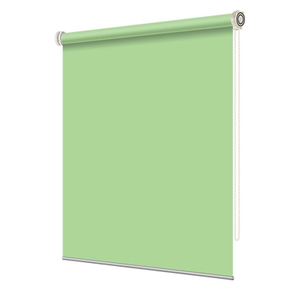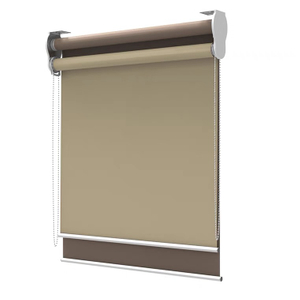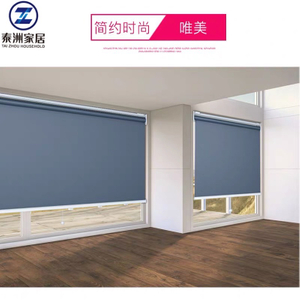PDLC, an acronym for Polymer-Dispersed Liquid Crystals, offers privacy, security, and energy efficiency. It may be applied as a self-adhesive plastic film on existing glass or integrated into glass goods such as smart windows, displays, and electronics.
Liquid Crystals: What Are They?
A "liqid crystal" is a thermodynamically stable "mesophase" of matter that lies between the liquid and solid phases. The discovery of liquid crystals dates back to 1888, when Austrian botanist Friedrich Reinitzer (1857–1927) was studying the lipid content of plants. He discovered that cholesteryl benzoate had two melting points: the first produced a clear liquid state, and the second produced a hazy one. The term "liquid crystal" now refers to the hazy, liquid form of materials. Liquid crystal molecules exist somewhere in between the highly ordered solid state and the disordered liquid and gas states.Known as "mesogens," these rod- or disc-like structures align along a common axis called the "director" to form liquid crystals. They are easily polarized, generally with the help of an electric field. For further details about liquid crystals, please click this link to view our article.
Why Do Liquid Crystals Occasionally Become Scattered Within A Polymer?
The polymer allows the liquid crystals to combine and solidify into a film shape that may then be sandwiched between sheets of plastic or glass. 'Isotropic' refers to the polymer's homogeneous optical characteristics that are constant throughout its structure. However, the liquid crystal is 'anisotropic' because its optical characteristics change when an electric field is applied, rather than remaining constant throughout its structure.
How Is PDLC Technology Operational?
Our daily lives are replete with liquid crystal displays (LCDs), which we see on watches, smart phones, and computer and television screens. But has anybody stopped to consider how this technology functions? It's actually rather simple to figure out.
The PDLC Film Technology
In LCD displays, a grid of liquid crystals is manipulated by an electrical current to display a specific image. The PDLC technology operates pretty much in the same way. In PDLC Film, the liquid crystals are arranged in a scattered droplet form. The droplets react collectively when an electric current is applied, turning the opaque liquid crystals visible.

Our Taizhou Switchable Privacy Film and Glass make use of this technology. The film or glass appears foggy and white while not in use. An electric current that aligns the liquid crystals in the "on" state causes the film or glass to become transparent.
Why Is This Technique known As Switchable Privacy?
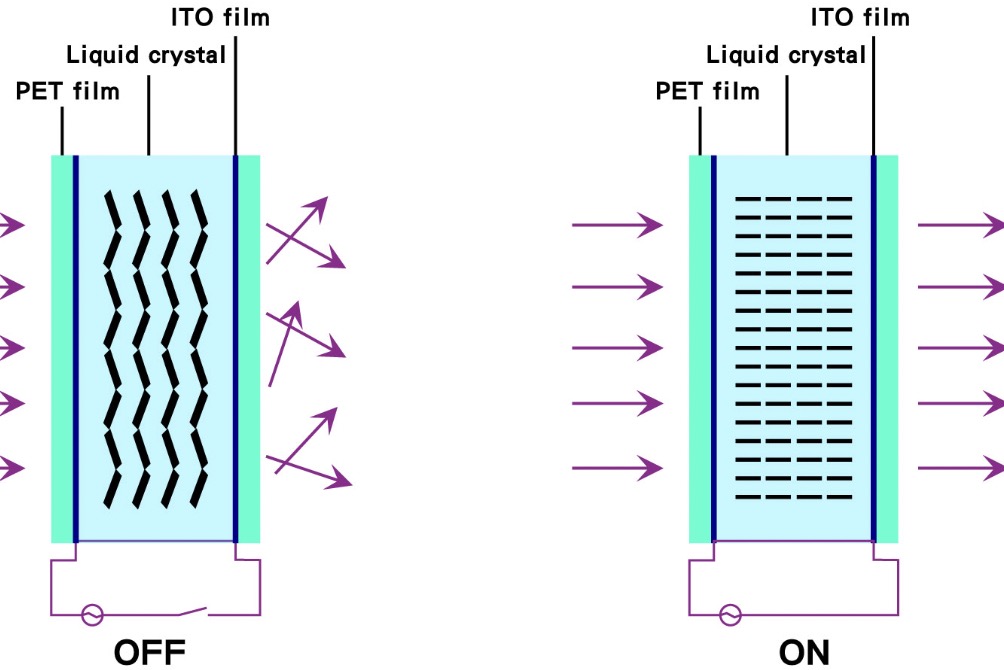
It is easy to control this liquid crystal technology. In the right applications, changing a wall, door, or window from transparent to opaque might change a space's functioning. Because switchable privacy film and glass use just 0.5 watts of power per square foot, they may be used in a variety of situations. Blinds and drapes are no longer necessary to provide a sense of seclusion in offices and meeting spaces. 96% of light is blocked when the material is solid, while only around 75% of light may get through when it is transparent. In other words, privacy may be achieved by just flipping a switch.
For What Reason Is PDLC Regarded As "Smart"?
Depending on the voltage it receives, the PDLC may either allow light to flow through or scatter light in multiple directions, which accounts for its intelligence. An alternating electric field is often created via the PDLC material by an alternating voltage, which is typically between 36 and 110 Vac. It's crucial to remember that the efficiency of the regulating system that runs PDLC film or glass determines how intelligent it is. It may be a light sensor, a simple push-button switch, or a computerized building automation system.
How Do PDLC Smart Glass Function?
In the absence of any applied voltage, the liquid crystals are in a disorderly arrangement and cause the incoming light to be diffused. When a voltage is introduced, the liquid crystals align in a parallel manner, enabling the passage of light.
Does PDLC Smart Glass Turn 'Non-transparent'?
No, the more correct term is translucent, as light scatters in different directions yet still passes through. When light is refracted or absorbed, the glass becomes "opaque." Some PDLC products include dyes combined with liquid crystals to provide a permanent dark hue that blocks some light and gives the appearance of being "opaque."
What Uses Are There For PDLC Smart Glass?
Applications for PDLC smart glass include retail and museum display cases, consumer electronics, healthcare, hospitality, and transportation. It is also utilized in smart windows for homes and businesses. Medical and industrial thermometers, as well as high-resolution screens for near-eye wearables, contain liquid crystals. Kindly see the samples given below for further information.
Video
What Is The PDLC Glass's Structure?
PDLC Smart Glass Is Composed Of:
● A 1.5 mm-thick PDLC core layer made up of liquid crystal droplets floating in a polymer film.
● Layers of the transparent conductor indium tin oxide (ITO).
● PET plastic, or optically transparent plastic, is used for the inside panels.
● Outermost panels made of float glass, which can be either acrylic or low-iron and tempered.
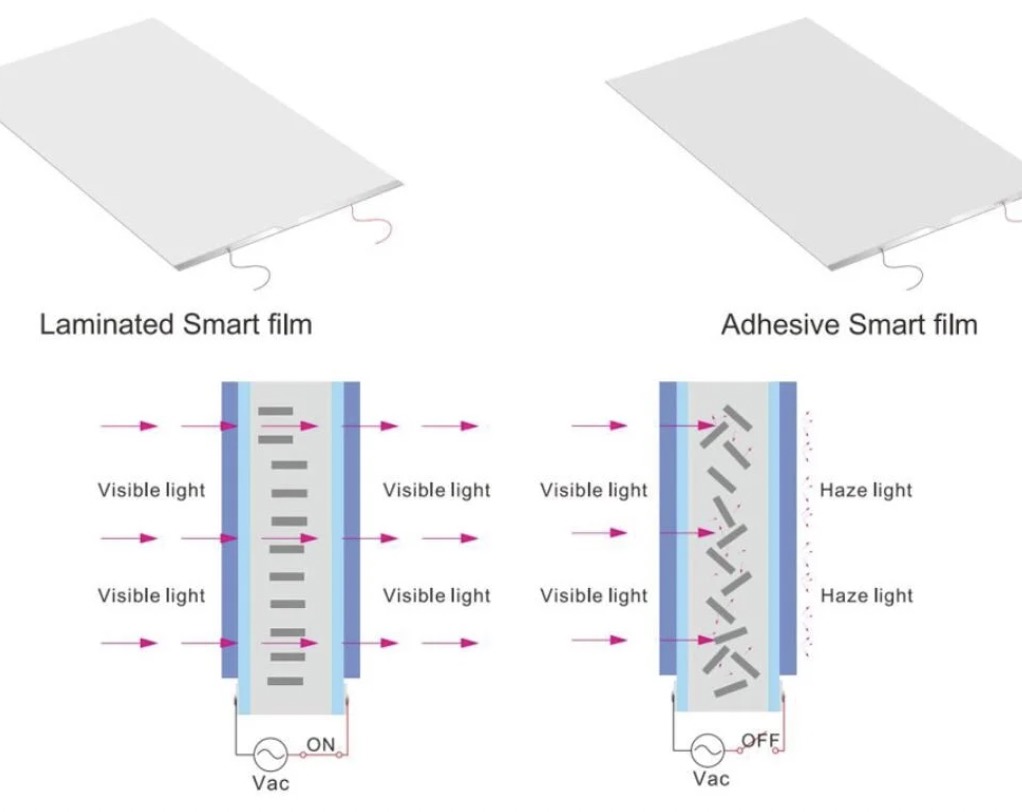
Can Electricity Be "Conducted" By PDLC Smart Glass?
No, because it is electrically insulated, the plastic internal PDLC layer does not carry electricity. Rather, it functions similarly to a capacitor's internal dielectric layer, producing an alternating electric field inside the PDLC film in response to an AC signal delivered to the capacitor's plates. This is how the frequency of the signal—typically 50 Hz or 60 Hz—is matched with the liquid crystals.
How Much Light Can Pass Through PDLC Glass?
In general, in the absence of a power source, the transmittance can decrease to as little as 2%. Its peak power, which varies according on the manufacturer, may reach up to 80% when connected to a power source.
Are PDLC Only Available As Artificial Materials?
Definitely not; common examples of naturally occurring liquid crystals include proteins, detergents, soaps, and even some types of clay.
What Are The Main Justifications For PDLC Smart Glass Use?
● Reducing the total amount of carbon emissions from buildings through the use of dynamic solar control reduces the need for climate control systems, which is in line with the goals of the European Climate Law.
● Because of the inside plastic lamination, the glass is shatterproof, increasing security.
● The light scattering provides privacy by successfully hiding whatever is behind the smart glass.
● Reduced glare (again because of the scattering effect) Less UV rejection, which prevents indoor furniture and artwork from deteriorating.
● Using the PDLC smart glass's dispersion effect to create a screen for image projection while it is switched off is a creative marketing strategy.
What Industries Make Use Of PDLC Glass?
● Transport
● Architectural (both commercial and residential)
● Interior decor
● Retail marketing
● Healthcare (as PDLC smart glass can take the place of filthy blinds and drapes, which frequently harbor viruses)
● Banking, because of the seclusion provided by ATMs and interior dividers
● Hospitality, especially in the restrooms, where windows to the outside world allow in more natural light.
Which Form Factors Are Possible For PDLC Glass?
● Switchable Laminated Glass
● Switchable Toughened Glass
● Switchable Window Film
● Switchable Double-Glazing
Can You Dim The PDLC Glass?
In fact, the voltage input may be changed to modify the transparency of the glass from fully opaque when turned off to the greatest level of transparency, which is often between 70% and 80%. This is accomplished by electrically adjusting the voltage using a switched-mode smart glass dimmer or by utilizing a variable isolating transformer.
Where Can I Purchase PDLC Smart Film Or Glass Samples?
You may send an email to martina@windowscover.com to speak with our specialist Martina about purchase reasonably priced samples. We now have PDLC Smart Glass and PDLC Smart Film in stock and available for shipment anywhere in the world.
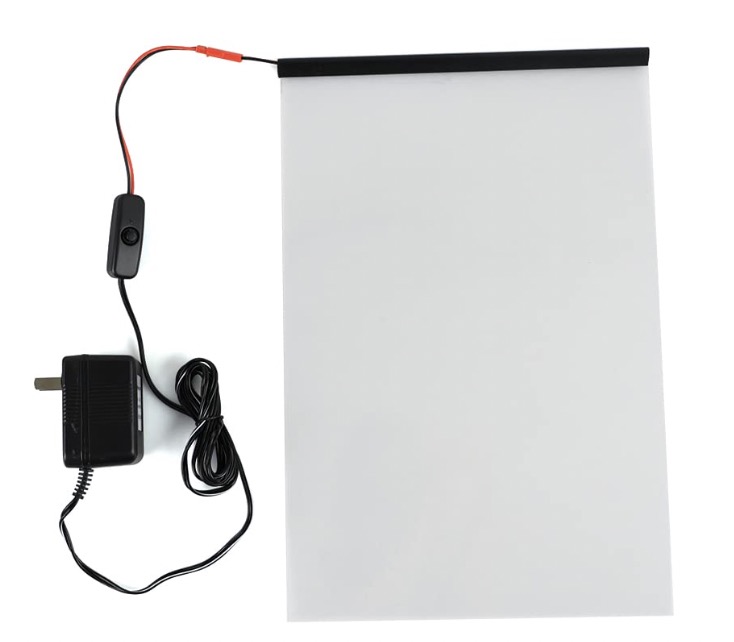
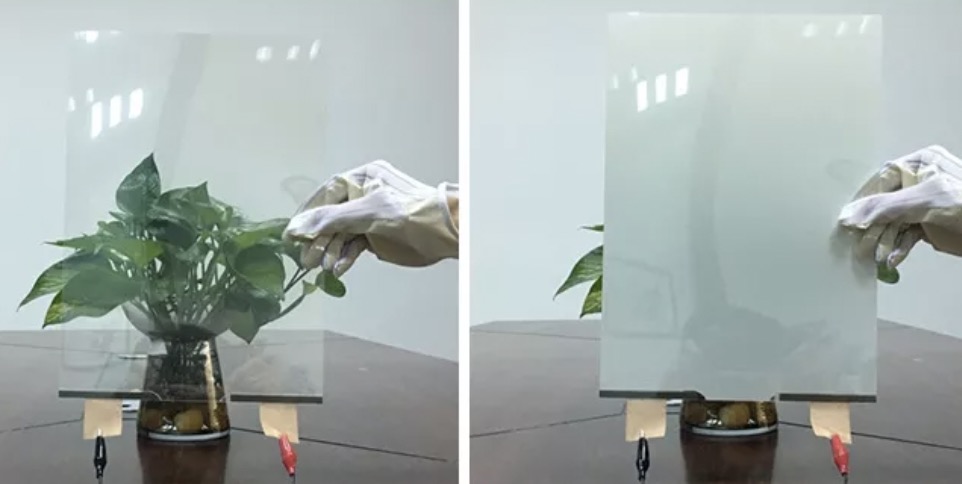
Where Can I Locate Businesses To Install Smart Glass With PDLC In My House?
Just install it like ordinary glass; you can locate local pros that specialize in glass installation, just like you would with any other sort of installation.
Is Smart Glass Right For You?
Even though smart glass costs $100~150 per square foot, compared to the cost of purchasing and installing conventional glass together with other window treatments, it is actually not that expensive, especially if you are choosing a customized variety like noise reduction or curved glass.
We at Taizhou provide premium smart glass at reasonable costs. We assure prompt shipment and excellent quality standards by manufacturing all of our goods in China. Do you intend to buy smart glass for your project? Please contact us right away and share some details about your project with us so that we can get you a free quotation.

 English
English













